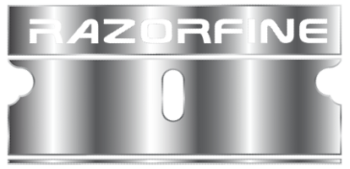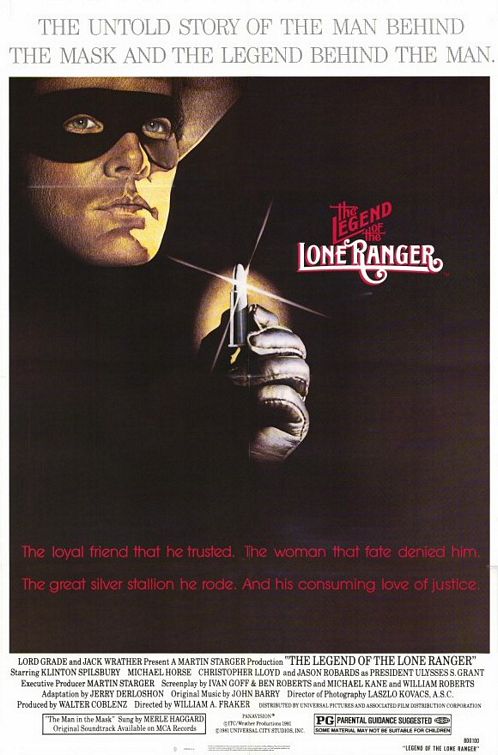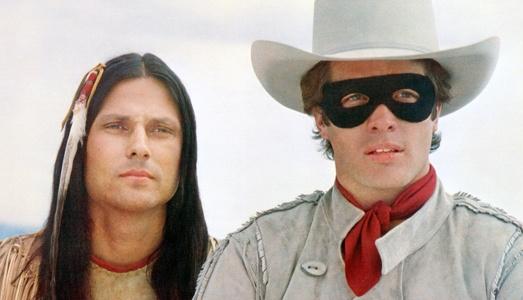- Title: The Legend of the Lone Ranger
- IMDb: link

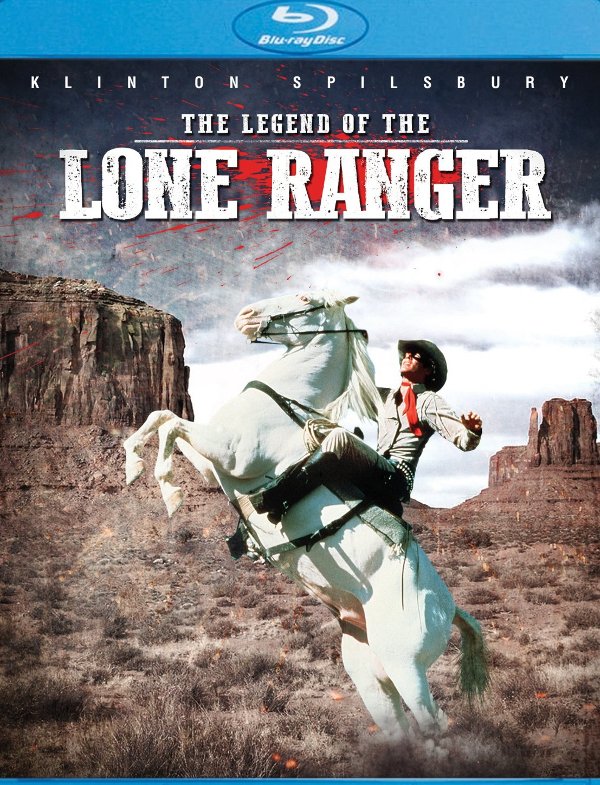 Gore Verbinski‘s meandering take on The Lone Ranger wasn’t the first modern take of the masked man on film. Released in 1981 amidst negative backlash for the movie’s producer suing actor Clayton Moore to prevent him from appearing in public as the character he played on television, and the bad press of having a difficult unknown actor whose voice had to be dubbed for The Lone Ranger‘s words to be understood, the film never really stood a chance.
Gore Verbinski‘s meandering take on The Lone Ranger wasn’t the first modern take of the masked man on film. Released in 1981 amidst negative backlash for the movie’s producer suing actor Clayton Moore to prevent him from appearing in public as the character he played on television, and the bad press of having a difficult unknown actor whose voice had to be dubbed for The Lone Ranger‘s words to be understood, the film never really stood a chance.
Here’s the thing about the much despised The Legend of the Lone Ranger – it’s actually not a bad movie. And it’s certainly a tighter and more complete origin story than Verbinski’s version. Yes it’s cheap (especially compared to the money thrown around in the new version), but it’s far more faithful to the source material (including John Reid meeting Tonto as boys and the real reason John was shipped off East) than this new version. It also has the feel of a western rather than just another big budget Hollywood action film accidentally stuck in the Old West.
Geared to a younger audience thanVerbinski’s new film, director William A. Fraker uses the narration of Merle Haggard in the form of a ballad to further explain and give context to how and why events unfold on screen. The effect may seem cheesy to some, but, especially to young audiences, it works well in presenting the story of such a legendary figure. This film also doesn’t make us wait two-hours for the “William Tell Overture.”
After the death of his parents and his short stay with Tonto as a boy, the film picks up in earnest with John Reid’s (Klinton Spilsbury, voice dubbed by James Keach) return to Texas on a stagecoach robbed by a group working for Butch Cavendish (Christopher Lloyd). The ride west introduces the older version of John as well as his romantic interest, Amy Striker (Juanin Clay), the daughter of the local newspaper owner (John Hart). The sequence also shows us John hasn’t gotten soft in his time back East as he’s able to save the runaway stagecoach and help apprehend the bandits.
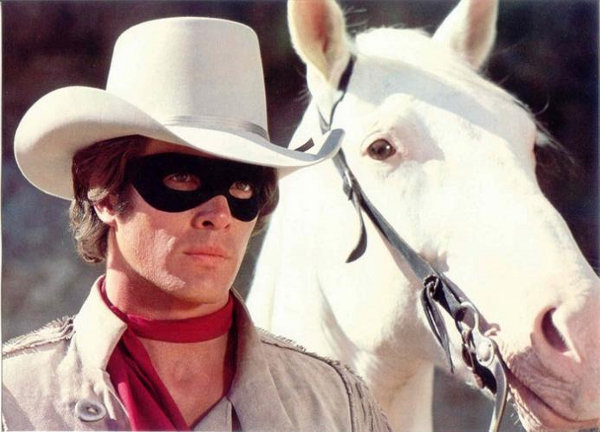
Dan Reid (John Bennett Perry) organizes the Rangers to catch the villains after an attack on the newspaper and the murder of the elderly Striker, and John goes with them. Led into an ambush by the duplicitous Collins (David Hayward) all the Rangers are killed in one of the film’s best sequences. Found by Tonto (Michael Horse) hours later, one of the men continues to fight for life – his old friend from childhood who the Native American will nurse back to health and continue to train to get justice for his brother.
Despite the dubbing (which is done well enough to be hardly noticeable), Spillsbury looks and feels the part of The Lone Ranger and, unlike the recent version, the film actually casts a Native American in the role of Tonto. Lloyd makes for a menacing, and somewhat insane, villain who must be stopped both for the murder of the Rangers and his new ridiculous plans. Perry is a nice choice for Dan Reid and the film skirts the complications of his family by having his wife and son far from the action when the Rangers are killed.
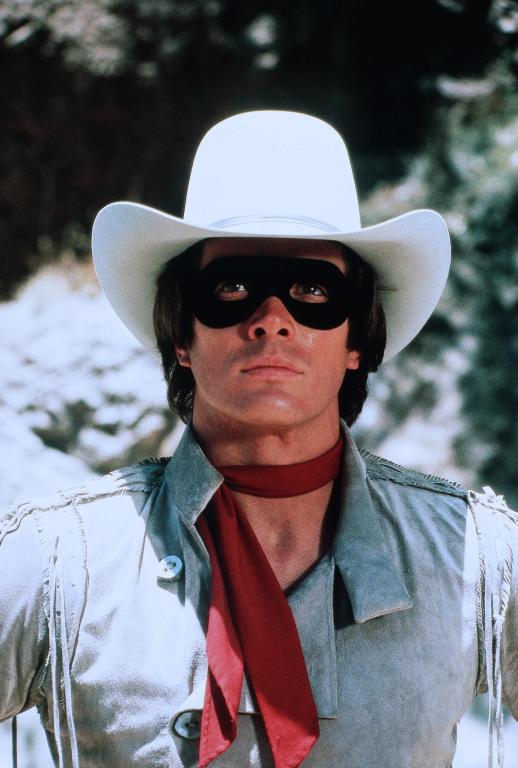 Although her role is relatively small, Clay provides something to be sacrificed by John Reid’s decision to remain dead and seek out justice as The Lone Ranger. The movie also has several other small performances that help sell the story including Matt Clark as the sheriff in black, Hayward as the traitorous Collins, and Richard Farnsworth, Ted Flicker, and Lincoln Tate in their somewhat goofy roles as Wild Bill Hickok, Buffalo Bill Cody, and General Custer.
Although her role is relatively small, Clay provides something to be sacrificed by John Reid’s decision to remain dead and seek out justice as The Lone Ranger. The movie also has several other small performances that help sell the story including Matt Clark as the sheriff in black, Hayward as the traitorous Collins, and Richard Farnsworth, Ted Flicker, and Lincoln Tate in their somewhat goofy roles as Wild Bill Hickok, Buffalo Bill Cody, and General Custer.
Broken up into three parts, the first-third of the film gives us John Reid’s backstory, his return to the West, and his burgeoning (but doomed) romance to Amy Stiker.
The middle-third of the film focuses on the attack in Bryant’s Gap, the discovery and training of a wild white stallion, the explanation of the silver bullets, and the beginning of Reid’s path as The Lone Ranger including saving Tonto from the hangman’s noose in another of the movie’s more memorable action sequences.
The film’s final third focuses on The Lone Ranger and Tonto saving President Ulysses S. Grant (Jason Robards) from Butch Cavendish who kidnapped Grant to try and force the United States to deed him sovereign rights of the new nation of Texas. By the end of the film the masked man has brought his brother’s killers to justice and, as expected, rides off into the sunset with his trusted Indian companion, a cloud of dust, and a hearty “Hi-yo, Silver.”
I’ll admit I came of age at the right time to enjoy The Legend of the Lone Ranger and ignore most of its flaws. I even had some of the toys inspired by the film. Do I enjoy the film as much today? Certainly not, but as a movie geared towards a young audience The Legend of the Lone Ranger still holds up relatively well, and far better than some of its critics are willing to admit. It’s earnestness, straightforwardness, and willing to embrace all aspects of The Lone Ranger legend (including the character’s costume which, I’ll admit, plays better in some scenes than others) help sell the character in ways Verbinski’s film (despite its budget, beautiful cinematography, and litany of stars) can’t quite seem to do.
[Shout! Factory, $19.97]
